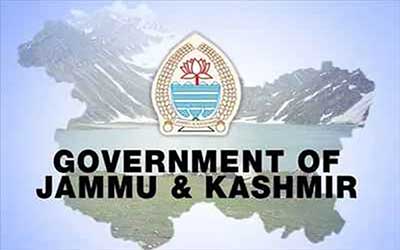Daily-current-affairs /
01 Nov 2020
Roshni Act ‘Null and Void’ : Daily Current Affairs

ROSHNI ACT ‘NULL AND VOID’
IN NEWS
- The Jammu and Kashmir government declared the actions taken under the
Jammu and Kashmir State Land (Vesting of Ownership to the Occupants) Act,
2001 or 'Roshni Act', as null and void.
ABOUT
- In 2001, Farooq Abdullah’s government enacted the Jammu and Kashmir
State Lands Vesting of Ownership to the Occupants Act. The law was to grant
the ownership of state land to its occupants, for a fee determined by the
government.
- The Act also sought the conferment of proprietary rights of around 20.55
lakh kanals of land (1,2,50 hectares) to the occupants. Additionally,
legislators hoped the Act would help generate resources to finance power
projects.
- The law initially set 1990 as the cut-off year for encroachment on State
land, based on which ownership would be granted.
- The state government had estimated an earning of Rs 25,000 crore from
the 20 lakh kanals of land and had said that the fund would be used to set
up hydroelectric electricity-generation projects.
- But in 2014, the Comptroller and Auditor General (CAG) found that only
Rs 76 crore had been received from the exercise of transferring encroached
land in a period of six years between 2007 and 2013.
SUBSEQUENT AMENDMENTS
- In 2005 the government relaxed the cutoff year to 2004.
- Subsequently with new government coming to power the cutoff was relaxed
further to 2007.
- The government also gave ownership rights of agricultural land to
farmers occupying it for free, charging them only Rs 100 per kanal as
documentation fee.
JAMMU AND KASHMIR
- Jammu and Kashmir was a region formerly administered by India as a state
from 1954 to 2019, constituting the southern and southeastern portion of the
larger Kashmir region, which has been the subject of a dispute between
India, Pakistan and China since the mid-20th century.
- Special status was accorded to Jammu and Kashmir under Article 370 of
the Indian constitution in 2019, the Parliament of India passed the Jammu
and Kashmir Reorganization Act, which contained provisions that dissolved
the state and reorganized it into two union territories – Jammu and Kashmir
in the west and Ladakh in the east.
- The state of Jammu and Kashmir consisted of three divisions: the Jammu
Division, the Kashmir Division and Ladakh which are further divided into 22
districts.
- Following the implementation of the Jammu and Kashmir Reorganisation
Act, 2019, the Government of India further approved the following related
laws:
- On 31 March 2020: Jammu and Kashmir Reorganisation (Adaptation of
State Laws) Order, 2020
- On 19 May 2020: Jammu and Kashmir Reorganisation (Adaptation of
State Laws) Second Order, 2020
- On 27 October 2020: Union Territory of Jammu and Kashmir
Reorganisation (Adaptation of Central Laws) Third Order, 2020.
CONCLUSION
- The good thing is that not all of the land has been transferred.
Government will be working round the clock to retrieve the land that has
been transferred.
- The decision is likely to create ripples through the political,
bureaucratic and police circles in J&K that have often been accused of
benefitting from the Act.








